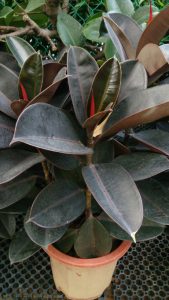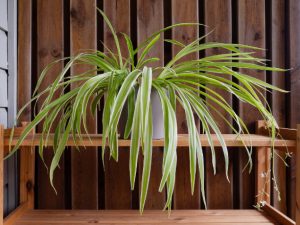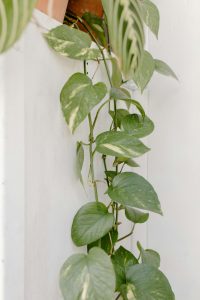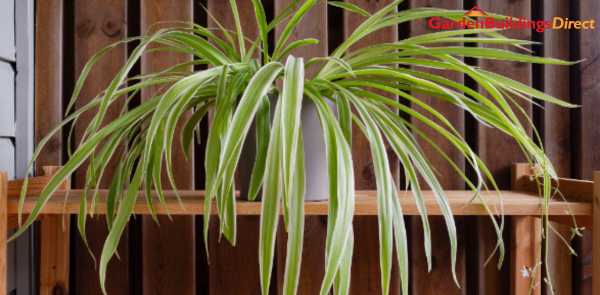Summer houses are an attractive feature for any garden – even moreso if you add plants inside. This might not be the first thing that comes to mind for growing indoor greenery, but it can be made to work with these plants. Read on for the full list and how to care for them.
Best Plants for a Summer House
The best plants for a summer house are those that thrive in low humidity. Since the structure is enclosed, too much moisture in the air can lead to damp or affect its condition. Here are a few that won’t cause those issues:
Snake plant (Sansevieria)

A snake plant is often called a set-it-and-forget-it plant, and for good reason. It thrives in dry conditions and can handle the kind of light changes you get in summer houses year-round. They also don’t give off much moisture, which makes them a safe bet for timber buildings.
Planting tips: Rotate the pot once a month. Snake plants tend to lean toward the light and won’t straighten back once they do.
ZZ plant (Zamioculcas zamiifolia)

ZZ plants can survive in low light and don’t need regular watering. They also store moisture in their thick stems and roots. This means they can go for weeks without attention. A perfect low-maintenance choice for a summer house plant.
Planting tips: Wipe the leaves down occasionally with a damp cloth. Clean leaves help the plant photosynthesise, especially in shadier corners.
Rubber Plant (Ficus elastica)

(Image Credit: Wikimedia Commons)
This one adds a bit more visual impact to your summer house plants display. It prefers indirect light, so we recommend placing it near a frosted window or behind a sheer curtain. And while it grows faster than some others, it’s still low-fuss as long as you don’t overwater.
Planting tips: Use a smaller-sized pot. Rubber plants grow better when their roots are slightly restricted. Only repot when the roots have outgrown the current pot, e.g. growing out of the drainage holes.
Spider Plant (Chlorophytum comosum)

(Image Credit: Wikimedia Commons)
Spider plants are one of the few that are safe around pets, and they don’t mind the odd dry spell either. You can hang them up or stick them on a shelf, and they’ll keep going. And since they don’t pump out much moisture, you won’t need to worry about moisture build-up with these.
Planting tips: Spider plants send out “babies” or plantlets at the ends of their long stems. Don’t cut them off straight away and let them grow a bit longer. Or just leave them hanging for a natural, trailing look.
Pothos (Epipremnum)

Pothos is forgiving and adaptable, hence why it’s a favourite among people who forget to water. It doesn’t mind drier air, and it’s happy to grow in hanging pots, trailing down shelves, or even wrapped around beams.
Planting tips: Pinch back the tips of the stems as they become too long, every few weeks. This encourages fuller, bushier growth, filling out rather than stretching too thin.
Summer House Plants: Round-up
Got space for all these plants in your summer house? Go for it, but try not to overcrowd the area. Each needs space for airflow and to stop moisture from getting trapped between pots. No room for a full set? One or two from the list will do to get you started.
You will also need to make sure that the interior timber of your summerhouse is protected with treatment, so that moisture from the plants can’t seep in and cause problems. A summerhouse is no substitute for a greenhouse, so you’re better off sticking to a few potted plants rather than over-filling it.Make sure that your pots can drain onto a tray rather than directly onto the wooden floor.
When it comes to ventilation, simply open the windows or doors now and then for air movement. If you decide to heat it in winter, here’s how you can save more: How to Heat Your Summerhouse Without Electricity


